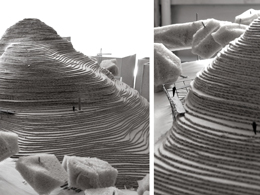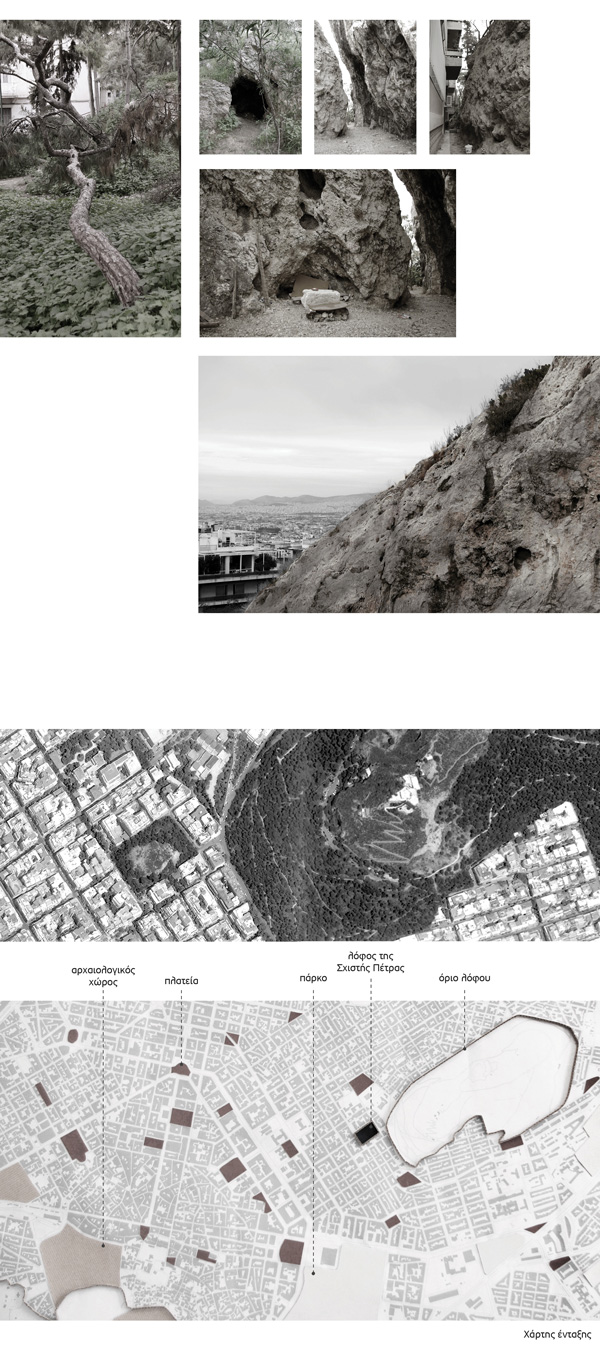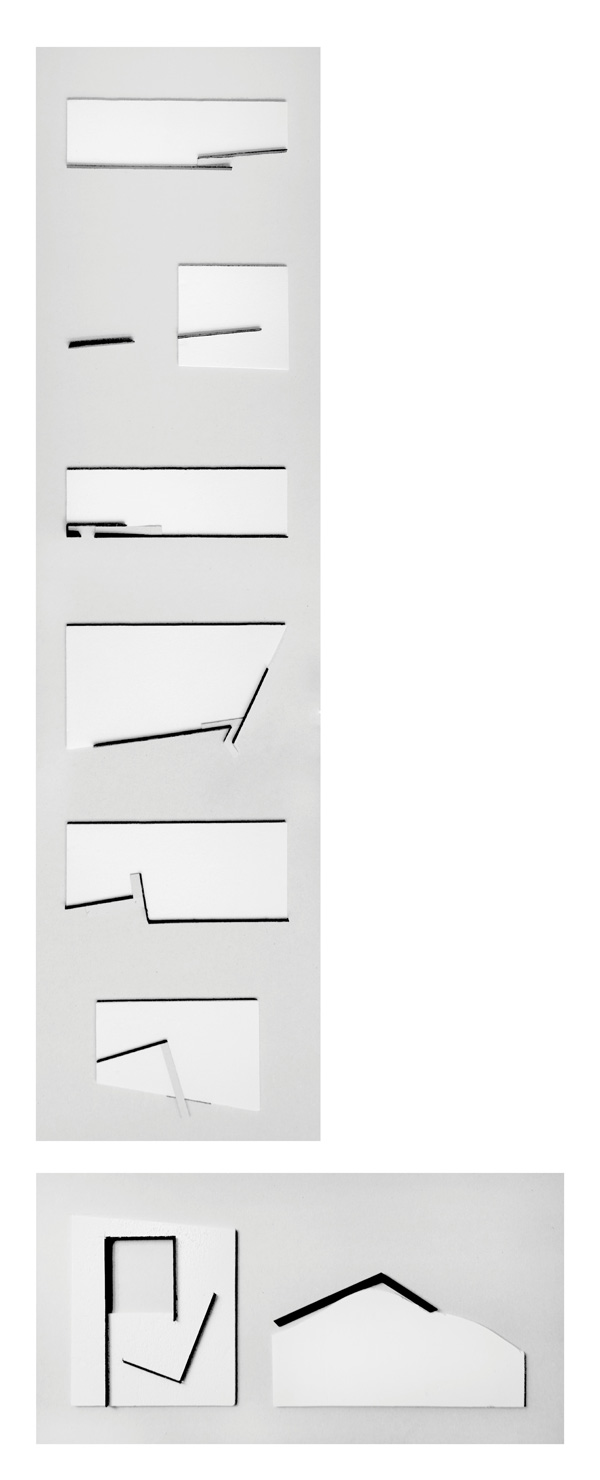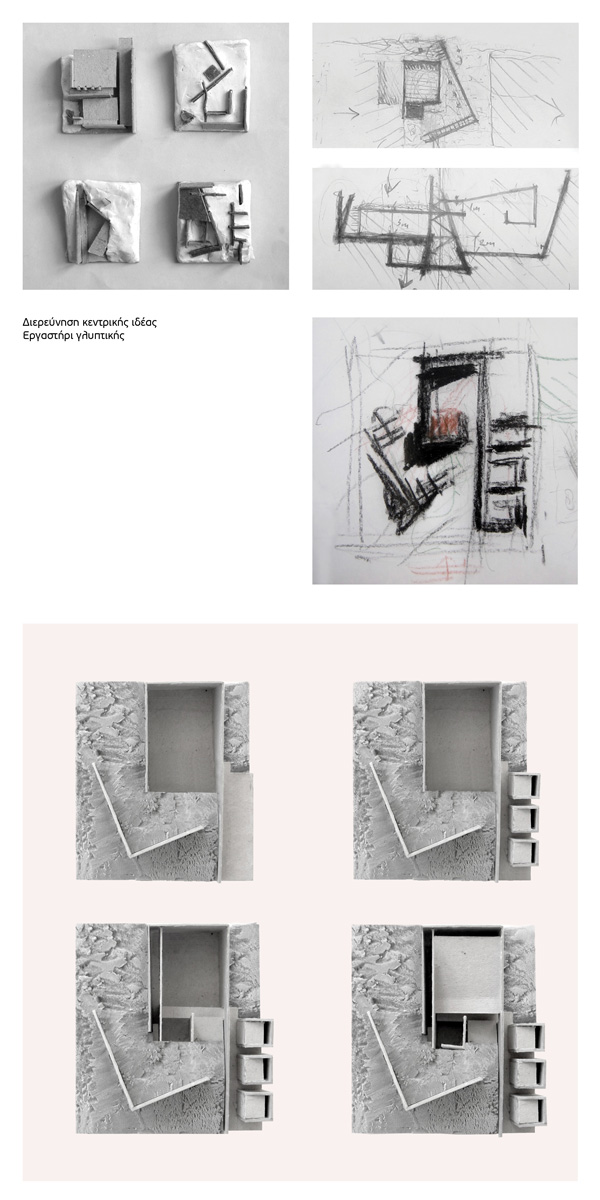STUDENTS PROJECTS
PROJECTS2013

12 April, 2015
Introducing Schisti Petra Hill…
Through a walk in an open sculpture park.
Students : Mpountouva Ioanna, Petropoulou Mirsini
Surpervisor: Sofia Tsiraki
NTUA
Presentation date : Febrouari 2014
As the title suggests, our urban intervention is given birth and shape by the place. The place constitutes the starting point and the core of both the analytical and compositional processes and is the one suggesting the design tools.
Schisti Petra is a small hill east of Lycabettus Hill. It formed together with Lycabettus a unified landscape till the 50s-60s, when the rapid development of the area changed the situation considerably. Today, Schisti Petra, tightly surrounded by the urban fabric, produces one of the most dynamic spatial situations of the city center.
Our initial observation that the relationship of the hill with its urban surroundings is not clearly defined makes us search for the space and way that could bestow meaning to this relationship. Our intervention is thus implementing a mediating architecture, an architecture of the intermediate space, an acrobatical stunt between the hill and the urban anarchy.

The strong interaction between the landscape and its urban surroundings, producing to a large degree the current spatial form, is reflected on models illustrating these two poles. On the organic form of the natural landscape a dense orthogonal network is superimposed. None of the two parts remains unaffected by their coexistence. While the landscape is dug showing the traces of the city, the latter develops itself uphill to come in terms with it.

The diagrams show the possible approaches by car and on foot. Of those, we isolate the four main approaches of the stroller and present those in section and perspective to illustrate the unique character of each, defined largely by the terrain. In this way we make the transition from the urban planning scale to a scale of observation and recording of the particular elements constituting the place.
The terrain of the hill is the product of human carving. An old quarrying has formed a narrow pass dividing the hill in two unequal halves, possibly another has shaped a natural balcony facing the Acropolis, while a third one, the construction of the surrounding road network has formed natural or manmade walls, constituting the limits of a rectangular rock base. The sole deviation from this shape is a strip of land belonging also to the suffocatingly close neighboring built zone; the hybrid character of this strip will render it a strong part of the intervention.
Finally, the vegetation on the hill, the result of planting, contributes to the mood of the place as well as the spatial organization of movement and rest.

The intervention's main goal is to create a path traversing the hill along an outdoor sculpture exhibition and redefining its boundaries on its way from the city to the foothills of Lycabettus.

It is implemented with three tools. Main design tool is the wall, inspired by the retaining wall at the boundaries of the Schisti Petra but in an expanded role; it breaks, inclines, penetrates, folds back and retains, thus creating a new boundary allowing entry points, passages, climbs, plateaus, view platforms. The path extends onto the surrounding streets through a second tool, that of paving, which functions as introduction to the intervention and is also maintained on the hill in an elliptical way. The intervention is completed through the sculptures themselves organizing movement and rest.

The sculpture workshop is the densest part of the intervention capsulizing its design principles. We have studied this part extensively and arrived over the course of this work at very different solutions, a representative part of which is presented in abstract models. Starting from a conventional building approach, we gradually replaced the building volume with earth to finally arrive at a landscape building sharing the vocabulary of the rest of the intervention. A first "embrace" of lines drawn on the city raster constitutes the main working space. A second "embrace" on a rotated raster hosts the supporting spaces and on the surface constitutes the main plateau along the path towards the hill. The two "embraces" lock on a tower facilitating the vertical movement of people and material. Three volumes hosting separate workshops along the plot boundary complete the composition.

On the side of the hill facing the city we use the walls to form three access points, anticipating the stroller from Exarchia, Panepistimio and Kolonaki. From Exarchia, the wall breaks to facilitate access to a small neighboring square, continues then at an angle and vanishes into the ground. From Panepistimio, the wall folds back to envelop the main ascending staircase. From Kolonaki, the wall forms an angle shifting the natural boundary backwards while also organizing a main exhibition plateau. The path continues upwards in an elliptical way accentuated through the paving and the sculptures and then splits at the natural pass. One path continues through the pass and embraces the hill to reach the natural balcony facing the Acropolis; a light metal ramp facilitates this movement by smoothing the altitude difference. The second path descends the hill to finally reach the foothills of Lycabettus, where two low walls support a metal platform enabling a last view of Schisti Petra prior to climbing Lycabettus.













